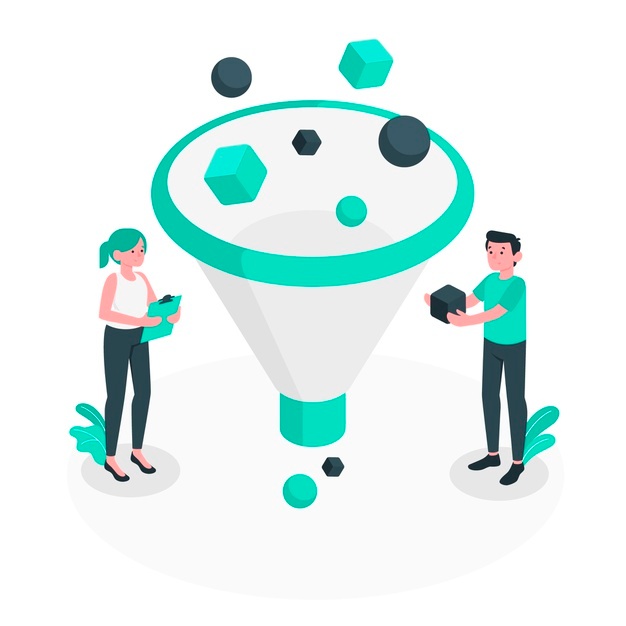
Having a computer science degree and building softwares from the ground up makes you think you can do it all from the comfort behind your computer screen. Then you realize (like I did) that you have got to hustle and sell to…people. Gasp! Talking to people, that is an introvert’s nightmare. The only thing that you can do, is to expand your comfort zone by being uncomfortable. If you do anything productively for a 1000 hours, you are going to become a master at it. The point is to keep pushing yourself till you get to those magical 1000 hours. Google, ask people, read books, hustle.
Self Worth
Before you dive into selling your product, I will urge you to ask yourself frankly how good your self worth is? You might think this is off the topic of the post, but this is the most valuable part of the sales job. Having good self worth does not mean being arrogant. It also does not mean beating yourself up for every small mistake that you make. It means being compassionate and kind with yourself, to accept yourself the way that you are without needing the approval of other people to make yourself feel worthy. It’s completely okay, required even, to visit a good therapist and work towards healing yourself if you think your self worth needs improving. I recommend these 2 books to everyone who are looking to heal themselves and their own self worth. These helped me in my own journey.
The Sales Funnel (the ‘hello world’ of selling)
You can think of this as a logical flowchart, one step after another. Stories and building relationships are your friends. The normal tendencies of a software developer is to problem solve and be logical. Problem solving will help you to a certain extent, being a logical Vulcan* will not. Like it or not, logic seldom builds an emotional connect. The buyer will want to keep drawing up walls starting with the way your dress, the way you talk to the solutions that you pitch. Think of it as a game. Your analytical mind needs to come up with solutions to keep the buyer from drawing up the walls as long as possible. Smile more. Let the purchasers talk more than you. Direct the focus on them and their team rather than judge yourself a lot in the moment. Keep the spotlight on them.
*Star trek reference

Stage 1: Awareness TO Leads
Generate your lead pipeline. Leads are probable people who can possibily convert into your paying clients. Understand your target demographic and reach out to as many people as you can. A cold reachout means you don’t know the person but you are still reaching out through email / social media / sms. A warm reachout usually means you are being referred either by a common colleague or some of your other clients. A warm reachout usually converts to a paying customer far more frequently as compared to a cold reachout because there’s some level of comfort and trust because of the referral. At this stage you are only making the people aware that your product and team exists. Nothing more, nothing less. Depending on the people you approach, they will be making a choice if what you are offering is valuable enough to them that they would want to use your product.
Stage 2: Interest TO Qualified Leads
You can guage if you should spend time on your lead if they reciprocate to your outreach, ask for details and generally sound interested in your product, in which case you should ask for more details from them like their budget, the problem that they want solved, how soon they would like the solution, how they feel about your product. If all these parameters are as per your expectation, you can set up a follow up with a well defined agenda and set expectations for both the client’s team and yours.
Stage 3: Intent TO Meeting
When potential clients spend their valuable time and energy for an actual discussion, you know they are intending to buy your product. Now intention does not mean a sale, as often times they might evaluate multiple products and choose the one that suits them. This is the stage where you need to convince them why your product meets their criteria. If it doesn’t cover all areas, what can you offer them to make it worth their while? Start by talking about the problems that they might have and pitch your product as a solution to those problems.
Stage 4: Consideration TO Negotiation
The customer is considering if they should spend money on your product and you will be sending your proposal. This is the stage where pricing models come into the picture. Propose a pricing as per your product value and not as per the client’s budget. Negotiations can be tricky, but make sure it’s a win for both you and your client. Nobody likes to lose or made a fool of, so choose your words wisely, know and trust your own self worth during negotiations.
Stage 5: Decision to Deal Closure
The client will evalute your proposal against your competitors, negotiate with you and finally come to a purchase decision. In case of rejection, take it as the stepping stone to success, and never spoil your relationship just because of the rejection. Word of mouth travels fast and how you deal with the rejection reflects on your professionalism as much as how you deal with success. Thank the client and let them know you would always be available in case they have any more requirements. In case of success, well done! It’s a definite high and you have worked hard to achieve this. Celebrate!
Featured Image by storyset on Freepik
Leave a Reply